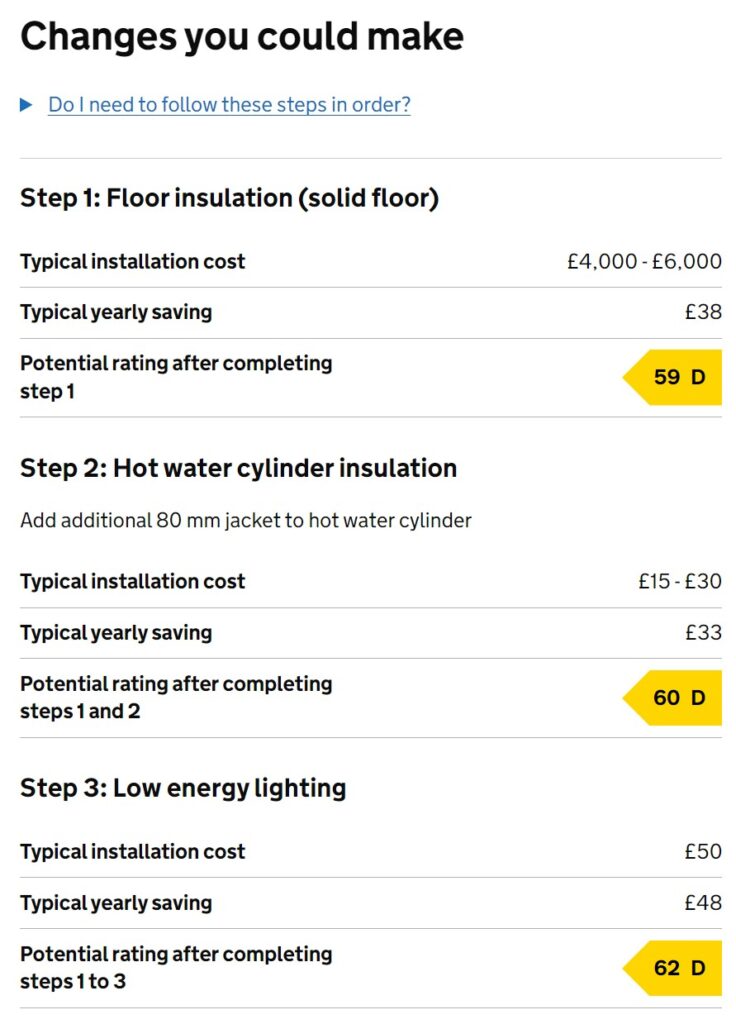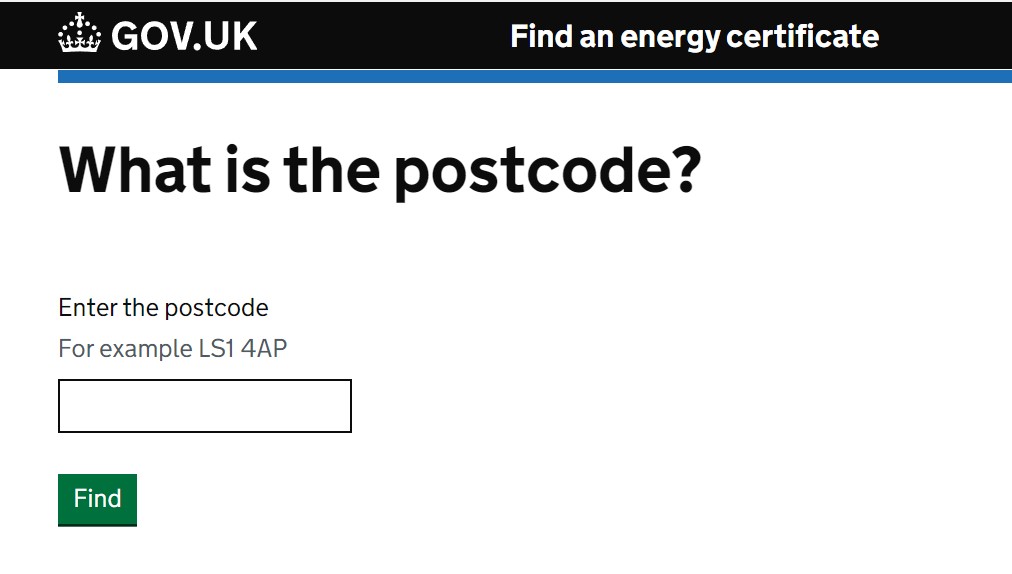EPCs are a requirement for properties in the UK, and you’ll need one to move house. They’re also actually quite useful. Find our how to read an EPC, find your existing one, and apply for a new one.
What is an EPC?
EPC stands for Energy Performance Certificate. It gives a property a score from A to G based on how energy efficient it is. It also gives recommendations about how you could improve your property.
Your EPC is broken down by feature (e.g. Windows, Heating). It gives each feature a score, which adds up to your total. This is how our one looked when we moved in:

This is a great place to start if you’re looking at improving your energy efficiency, and cutting your bills. In fact, if you scroll down the report, it will also give you a rundown of changes to make, plus costs and savings (note: these are not all the steps I was recommended, just the first 3).

Of course, these are just the financial costs/savings – e.g. they don’t take into account the aesthetic improvement of new windows, or energy independence of solar panels.
Where to find your EPC
You find your Energy Performance Certificate on the UK Government website here.
It’s free and extremely simple. All you need is your postcode to get started. It looks like this:

How to get a new EPC
Energy Performance Certificates expire every 10 years. If you want to sell your house, you will need a valid EPC to show the buyers.
You’ll need to find an EPC assessor near you. The government have once again made this very easy – there’s a list on their website here.
How much does an EPC cost?
According to the Homeowners’ Alliance, between £60 and £120. My last one cost £70 and I just used a local assessor – if you go through the UK Government list above and ring a few numbers, you’ll be able to find someone reasonable.



